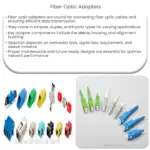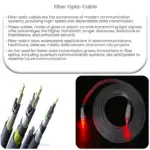Explore the 6 most common types of electrical cables – NM, UF, MC, Coaxial, Ethernet, and Fiber Optic, their uses and unique features.
The 6 Most Common Types of Electrical Cables
Electrical cables are an essential component in any electrical system, transmitting electricity from the power source to the device. Understanding the different types of electrical cables can help you choose the most appropriate one for your specific application. This article will outline the six most common types of electrical cables.
1. Non-Metallic Sheathed Cable (NM Cable)
Non-Metallic or NM cables, also known as Romex cables, are among the most common types of electrical cables used in residential properties. They consist of two or more insulated conductors contained in a plastic sheath.
2. Underground Feeder Cable (UF Cable)
Underground Feeder or UF cables are similar to NM cables, but their sheath is designed to resist moisture, making them suitable for underground use. UF cables are typically used in outdoor lighting and irrigation systems.
3. Metal-Clad Cable (MC Cable)
Metal-clad or MC cables are designed with a metal sheath for protection, making them a popular choice for commercial and industrial applications. Their robust design allows them to withstand harsh conditions.
4. Coaxial Cable
Coaxial cables are widely used in telecommunications and network connections, including TV and internet services. They feature a central conductor surrounded by an insulating layer, a metallic shield, and an outer layer of insulation.
5. Ethernet Cable
Ethernet cables, often referred to as Cat5, Cat6, or Cat7 cables, are used for wired internet connections and local area networks (LANs). They consist of multiple twisted pairs of copper wire.
6. Fiber Optic Cable
Fiber optic cables transmit data as pulses of light, making them ideal for high-speed internet and telecommunications. Unlike other cables, they use light instead of electricity, significantly reducing signal loss over long distances.
In conclusion, the type of electrical cable you choose depends largely on the intended application, the required durability, and the environment in which it will be used. Always ensure that the cable you select meets the requirements of your project for safety and efficiency.




